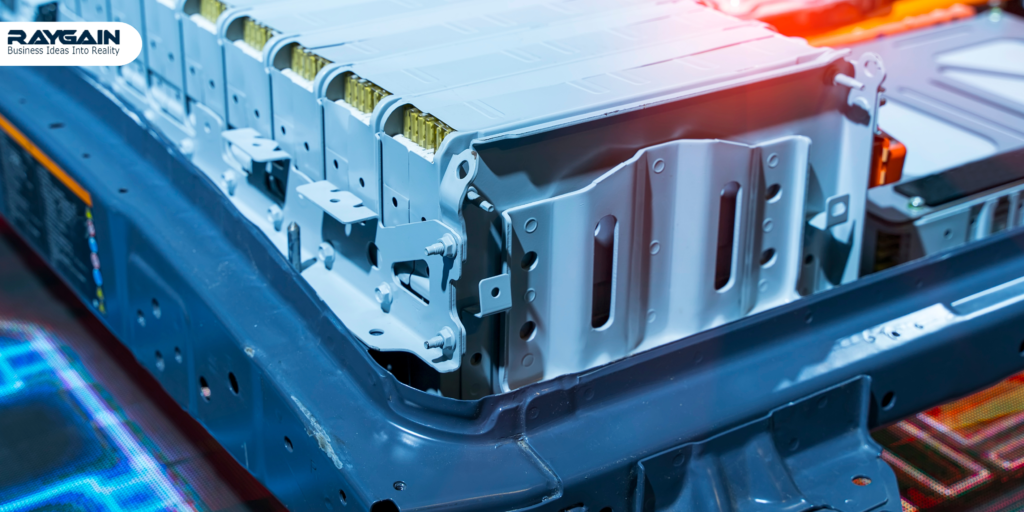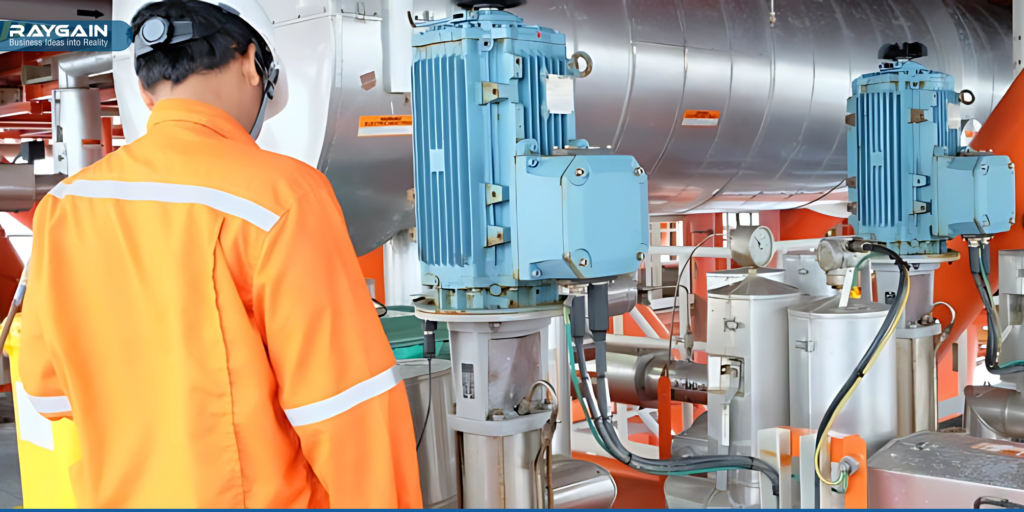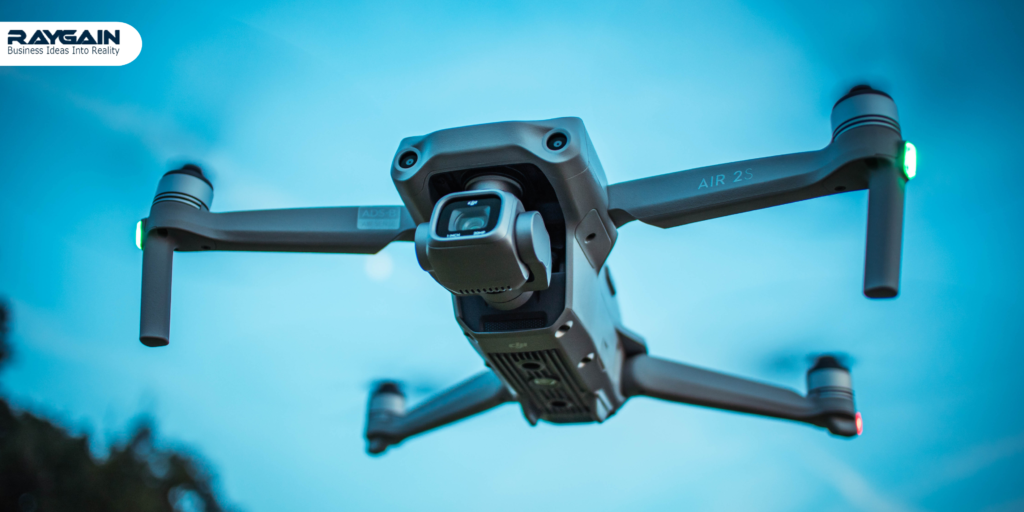Why Every Enterprise Needs a Private 5G Network Company Today

In today’s hyper-connected world, enterprises demand faster, more secure, and more reliable communication networks. The growing need for high-speed, low-latency data transmission has made private 5G networks a strategic asset. Unlike public 5G, which serves broad audiences, a private 5G network offers dedicated connectivity tailored to an organization’s specific needs. This is where partnering with a private 5G network company becomes essential. What Is a Private 5G Network? A private 5G network is a standalone wireless infrastructure that provides exclusive access to 5G connectivity within a defined area such as a factory, warehouse, campus, or smart city. It is not shared with general public traffic and can be fully customized, offering enterprises total control over their network resources. Why Enterprises Are Adopting Private 5G 1. Enhanced Network Security With increasing cybersecurity threats, enterprises need secure communication systems. A private 5G network company provides end-to-end encryption and secure access protocols, ensuring that sensitive enterprise data stays protected. 2. High Speed and Low Latency Traditional Wi-Fi and public networks often suffer from interference and congestion. Private 5G networks offer ultra-low latency and lightning-fast speeds, which are crucial for real-time applications like remote operations, robotics, and AI-powered analytics. 3. Greater Control and Customization Enterprises can configure their private 5G networks based on specific requirements—coverage area, number of devices, bandwidth, and quality of service (QoS). A trusted private 5G network company enables full control over performance and traffic management. 4. Scalability and Flexibility Whether you’re operating a single site or managing multiple facilities, private 5G networks can scale seamlessly. Businesses can add new users, devices, or sites without compromising performance. 5. Supports Industry 4.0 Applications A private 5G network company empowers smart manufacturing, connected workers, autonomous vehicles, and IoT applications. The ability to connect thousands of sensors and devices simultaneously drives digital transformation across sectors. Key Benefits of Partnering with a Private 5G Network Company Choosing the right partner is crucial to building a reliable and future-ready network. Here’s how a professional private 5G network company like Raygain Technologies can transform your enterprise: 1. Customized Network Design Raygain tailors every solution based on your environment—be it industrial, corporate, or remote. We conduct a complete site assessment, analyze performance requirements, and deliver a private 5G network built for your business goals. 2. End-to-End Deployment & Support From spectrum acquisition to hardware installation and software configuration, Raygain handles every aspect. We ensure seamless integration with your existing IT infrastructure, reducing downtime and improving operational efficiency. 3. Compliance and Security We prioritize network compliance and robust security standards to meet industry regulations. Our 5G solutions are designed to ensure enterprise-grade protection against cyber threats. 4. Advanced Monitoring & Management Our platforms offer real-time monitoring, analytics, and remote troubleshooting. You gain full visibility into network performance and device activity, enabling proactive issue resolution. 5. Future-Ready Infrastructure As technologies evolve, so do our networks. Raygain builds scalable and adaptive systems, allowing for seamless upgrades as your connectivity needs grow. Real-World Use Cases Why Choose Raygain Technologies? At Raygain Technologies, we specialize in building secure, scalable, and high-performance private 5G networks tailored to enterprise needs. With deep expertise in wireless communication, IoT, and smart infrastructure, we are the trusted private 5G network company for businesses aiming to lead in the digital era. Whether you’re planning to deploy a private 5G network for your smart factory, corporate campus, or utility operation, our team ensures a smooth and cost-effective transformation. Final Thoughts As digital transformation accelerates, enterprises can no longer rely on traditional networks. From enhancing operational efficiency to securing mission-critical data, a private 5G network company can unlock game-changing capabilities for your organization. Investing in private 5G today means staying competitive, connected, and future-ready. Partner with Raygain Technologies to deploy a tailor-made 5G solution that meets your evolving business needs. Book Your Free Consultation
Why Tech-Driven Companies Are Investing in Dedicated Offshore Development Centers

As the digital economy continues to evolve, tech-driven companies are under growing pressure to innovate faster, scale efficiently, and maintain high-quality software delivery. In response to these challenges, an increasing number of organizations are turning to the dedicated offshore development center (ODC) model as a strategic solution. A dedicated offshore development center allows companies to build long-term, scalable teams in cost-effective locations without compromising on quality or control. It’s more than just outsourcing—it’s about creating a global development ecosystem that supports continuous growth, agility, and innovation. In this blog, we explore the reasons why forward-thinking tech companies are investing in ODCs and how Raygain Technologies enables this transformation. What Is a Dedicated Offshore Development Center? A dedicated offshore development center is a remote team of software professionals—developers, testers, UI/UX designers, DevOps engineers, and project managers—hired full-time to work exclusively for a single client. These teams are typically based in countries with a strong talent pool and lower operational costs, such as India or Eastern Europe. Unlike traditional outsourcing, where work is often handled on a project-by-project basis, an ODC functions as an extension of the client’s internal team. This provides better continuity, knowledge retention, and alignment with long-term business goals. Why Tech-Driven Companies Are Embracing the ODC Model 1. Faster Time-to-Market Speed is crucial in the tech world. Whether it’s launching a new product, releasing a software update, or integrating emerging technologies, time-to-market can define success. A dedicated offshore development center enables 24/7 development by leveraging teams in different time zones. With round-the-clock productivity and agile processes, tech companies can shorten development cycles and respond faster to market demands. At Raygain Technologies, we ensure rapid delivery through agile sprint planning, continuous integration, and real-time collaboration tools. 2. Access to Specialized Talent Tech companies often require expertise in niche areas such as AI, blockchain, cloud-native applications, cybersecurity, or IoT. Recruiting such talent locally can be difficult and expensive. With a dedicated offshore development center, companies can access a global pool of highly skilled professionals trained in cutting-edge technologies. Raygain helps clients build dedicated teams with the exact tech stack and domain expertise needed to meet their project goals. 3. Cost-Effective Scaling Hiring, onboarding, and maintaining a full in-house development team in high-cost countries can strain resources—especially for startups and mid-sized companies. By setting up a dedicated offshore development center, companies can significantly reduce development costs while maintaining high-quality standards. The cost advantages of offshore operations include lower salaries, reduced overhead, and minimal infrastructure investment. Raygain provides transparent pricing models that allow clients to scale efficiently without hidden costs. 4. Long-Term Development and Product Stability Tech products are rarely one-off projects. They require continuous enhancement, support, and iteration. An ODC ensures long-term product stability by retaining the same team over time. This continuity leads to better code quality, deeper product understanding, and lower onboarding time for new team members. Raygain’s dedicated teams are integrated deeply into the client’s development lifecycle, ensuring consistent delivery and minimal disruption. 5. Increased Focus on Core Business Managing software development internally can divert attention from core strategic activities such as sales, marketing, and customer engagement. With an ODC handling development, tech leaders can focus on growth, innovation, and customer success. Raygain takes care of hiring, team management, infrastructure, and compliance—so clients can stay focused on driving business value. 6. Data Security and Compliance For tech companies, protecting user data and intellectual property is a top priority. A trusted offshore development partner ensures enterprise-grade security, secure communication channels, and strict adherence to data compliance standards like GDPR, HIPAA, or ISO 27001. At Raygain Technologies, we implement secure access protocols, sign NDAs, and provide a secure development environment for all offshore teams. Key Use Cases: How Tech Companies Use ODCs Tech-driven businesses are leveraging ODCs for a variety of needs, including: Why Raygain Technologies? At Raygain Technologies, we specialize in setting up and managing dedicated offshore development centers tailored to your technical and business goals. With years of experience supporting global clients, we offer: Whether building your first offshore team or expanding your global development footprint, Raygain ensures you succeed with a scalable, cost-effective, and fully managed ODC solution. Final Thoughts For tech-driven companies aiming to stay competitive, agile, and future-ready, a dedicated offshore development center offers a strategic path forward. It empowers organizations to innovate rapidly, scale seamlessly, and optimize resources without compromising on quality. As the global demand for technology talent continues to grow, investing in an ODC is no longer just an option—it’s a smart business move. Ready to build your dedicated offshore team? Contact Raygain Technologies today and discover how we can help you establish a high-performance offshore development center tailored to your vision.
How Digitization Is Transforming Maintenance and Inspection (M&I) Practices

In today’s evolving industrial landscape, organizations are increasingly embracing digital technologies to enhance their operations. A key area of transformation is the digitization of M&I practices, where traditional Maintenance and Inspection methods are being modernized through smart systems and data-driven tools. This shift is not just about convenience—it’s about improving safety, reducing costs, and optimizing asset performance across industries. What Is the Digitization of M&I Practices? The digitization of M&I practices refers to the application of digital tools and intelligent technologies—such as IoT, AI, and cloud computing—to improve how maintenance and inspection tasks are carried out. Instead of relying on manual logs or time-based schedules, companies now use real-time data and predictive analytics to manage equipment health and compliance. This digital approach: Technologies Behind the Digitization of M&I Practices Several cutting-edge technologies are at the heart of this transformation: • Internet of Things (IoT) IoT sensors continuously collect data from machinery—such as temperature, pressure, and vibration—allowing real-time condition monitoring and early fault detection. • Artificial Intelligence and Machine Learning AI models analyze historical and real-time data to detect patterns, predict failures, and suggest maintenance actions—reducing downtime and improving decision-making. • Digital Twin Technology Digital twins are virtual replicas of physical equipment. They simulate performance in real time and help technicians inspect assets remotely and accurately. • Cloud-Based Maintenance Platforms These platforms centralize data, enable remote collaboration, and automate reporting—ensuring faster, more informed responses and seamless regulatory compliance. Benefits of the Digitization of M&I Practices Embracing the digitization of M&I practices delivers multiple benefits to industrial operations: ✔️ Reduced Downtime Predictive maintenance minimizes unexpected breakdowns, ensuring maximum uptime and smoother production processes. ✔️ Cost Efficiency Digital systems eliminate redundant manual work, reduce unnecessary maintenance, and optimize the use of spare parts and labor. ✔️ Improved Safety Remote inspections, automated alerts, and real-time monitoring reduce human exposure to hazardous environments, promoting worker safety. ✔️ Enhanced Compliance Digitally stored inspection records improve traceability, accuracy, and readiness for audits or regulatory reviews. ✔️ Better Decision Making With centralized dashboards and data insights, maintenance teams can plan smarter and respond faster to potential issues. Applications Across Industries The digitization of M&I practices is transforming multiple industries, including: • Manufacturing IoT and AI systems track machinery performance to trigger preventive actions, reducing costly downtimes. • Oil and Gas Remote monitoring tools, drones, and digital twins are used for pipeline and offshore equipment inspection—saving time and reducing risk. • Energy and Utilities Smart grids and connected infrastructure use digital inspection systems to improve reliability and predict service interruptions. Overcoming Implementation Challenges Despite the clear benefits, organizations may face some hurdles in adopting the digitization of M&I practices: These challenges can be addressed by working with an experienced digital transformation partner like Raygain Technologies, which provides end-to-end guidance, training, and technical support. Why Choose Raygain Technologies? At Raygain Technologies, we specialize in empowering industrial organizations with smart, scalable solutions for modernizing their operations. Our expertise in the digitization of M&I practices spans a wide range of industries—from manufacturing and energy to oil and gas. We offer: Our goal is to help your business minimize downtime, improve safety, and stay ahead of the curve through digital innovation. Conclusion The digitization of M&I practices is more than a technological upgrade—it’s a strategic move toward smarter, safer, and more efficient operations. As industries continue to modernize, those who adopt digital M&I solutions will enjoy a competitive edge in reliability, compliance, and performance. Ready to begin your digitization journey? Contact Raygain Technologies to learn how we can help transform your maintenance and inspection processes.
How Connected Machinery Is Powering the Future of Smart Manufacturing

In the age of Industry 4.0, smart manufacturing is transforming the way industries operate. From real-time analytics to autonomous production systems, manufacturers are now embracing digital innovation to stay competitive. At the heart of this transformation is connected machinery — intelligent devices and systems that communicate, monitor, and optimize industrial processes without manual intervention. What Is Smart Manufacturing? Smart manufacturing refers to the use of advanced technologies such as IoT (Internet of Things), AI (Artificial Intelligence), cloud computing, and data analytics to enhance productivity, efficiency, and flexibility in manufacturing operations. It allows machines and systems to talk to each other, make decisions, and respond to changes in real-time. This connected ecosystem empowers manufacturers with valuable data and insights that were previously impossible to capture. The Role of Connected Machinery Connected machinery is the backbone of smart manufacturing. These machines are equipped with sensors, communication protocols, and software that allow them to: By enabling continuous communication and coordination between equipment, connected machinery ensures higher accuracy, better decision-making, and reduced downtime. Key Benefits of Connected Machinery in Smart Manufacturing 1. Real-Time Monitoring and Control Machines can be monitored remotely using IoT dashboards. Any anomalies, inefficiencies, or faults can be detected and addressed before they cause delays or failures. 2. Predictive Maintenance Connected machinery can anticipate when components are likely to fail. This allows technicians to perform maintenance proactively, avoiding unexpected breakdowns and saving costs. 3. Data-Driven Decision Making Machines continuously collect data on performance, usage, and efficiency. With cloud analytics, this data helps manufacturers optimize operations, forecast trends, and improve resource allocation. 4. Energy Efficiency Intelligent equipment tracks energy usage and highlights opportunities to reduce waste and lower costs. This not only benefits the environment but also improves profit margins. 5. Increased Safety With fewer manual interventions and better monitoring, connected systems reduce the risk of accidents and equipment-related hazards in the workplace. Use Cases Across Industries Automotive: Assembly lines use connected machinery for automated welding, painting, and quality control, ensuring high-speed and high-accuracy production. Pharmaceutical: Equipment monitors temperature, pressure, and humidity to maintain compliance with strict manufacturing standards. Food & Beverage: Real-time monitoring ensures hygiene, consistency, and safety across the production chain. Textiles: Smart looms and dyeing machines adjust settings based on fabric type and demand trends. Heavy Industry: Predictive maintenance on turbines, engines, and compressors reduces failure rates and enhances lifecycle performance. How Raygain Technologies Supports Smart Manufacturing At Raygain Technologies, we help organizations modernize their factories with advanced smart manufacturing solutions powered by connected machinery. Our offerings include: We work closely with manufacturers to understand their challenges and build solutions that streamline workflows, reduce costs, and enhance output quality. Final Thoughts Smart manufacturing isn’t just a trend — it’s the future of industrial growth. With connected machinery, manufacturers gain a powerful toolset to monitor, analyze, and act faster and smarter than ever before. As the need for efficiency and agility grows, integrating intelligent machines into your operations is no longer optional — it’s essential. Contact Raygain Technologies
How Predictive Maintenance Vibration Analysis Protects Rotary Equipment

In today’s fast-paced industrial landscape, ensuring the continuous and safe operation of rotary equipment is critical. Unexpected failures can lead to costly downtimes, operational inefficiencies, and safety hazards. One of the most effective solutions to prevent these issues is predictive maintenance vibration analysis. This powerful strategy allows industries to monitor and maintain rotating machines proactively, helping to avoid breakdowns before they occur. What is Predictive Maintenance Vibration Analysis? Predictive maintenance vibration analysis involves measuring and analyzing vibration levels in rotary equipment to identify early signs of wear, misalignment, imbalance, or mechanical failure. Using sensors and data analytics, this method captures high-frequency vibrations and compares them with baseline data to detect anomalies. When applied consistently, vibration analysis offers insights that enable technicians to schedule maintenance activities only when needed, thereby reducing unnecessary repairs and extending equipment life. Importance for Rotary Equipment Rotary machines, such as pumps, compressors, turbines, and motors, are integral to many industrial operations. These systems operate continuously under high loads and speeds, making them prone to wear and tear. Predictive maintenance vibration analysis offers the following benefits for rotary equipment: 1. Early Fault Detection Vibration patterns can reveal issues such as unbalanced rotors, bearing wear, and shaft misalignment. By identifying these problems early, companies can prevent severe equipment damage. 2. Reduced Downtime By planning maintenance based on real-time data, industries can avoid unplanned shutdowns, keeping production lines operational and efficient. 3. Optimized Maintenance Schedules Vibration analysis enables a shift from time-based to condition-based maintenance. This helps reduce maintenance costs and extend machinery lifespan. 4. Improved Equipment Performance Regular vibration monitoring ensures machinery operates at peak efficiency, reducing energy consumption and improving output. 5. Enhanced Safety Faulty rotary machines pose serious safety risks. Predictive maintenance minimizes the chance of catastrophic failure, protecting both assets and personnel. How the Vibration Process Works The vibration analysis process typically involves the following steps: This structured process ensures that even subtle changes in machine behavior are detected before they escalate into serious issues. Use Cases Across Industries Manufacturing Factories use vibration analysis to maintain continuous production and avoid downtime caused by equipment breakdowns. Oil & Gas Critical rotary assets like compressors and pumps are monitored to avoid system failure in harsh operating environments. Energy In power generation plants, vibration monitoring ensures turbines and generators operate safely and efficiently. Chemical Maintains the reliability of process equipment, ensuring regulatory compliance and product quality. Water Treatment Pumps and motors are kept in top condition, ensuring consistent service delivery. Why Choose Raygain Technologies? At Raygain Technologies, we provide advanced predictive maintenance vibration solutions tailored to your industrial needs. Our systems use high-precision sensors and AI-driven analytics to deliver real-time diagnostics for your rotary equipment. With Raygain, you can: Our technology is easy to integrate, scalable, and backed by expert support, making it the smart choice for businesses looking to upgrade their maintenance strategy. Final Thoughts Predictive maintenance vibration analysis is a critical tool for modern industries that rely on rotary equipment. By detecting early signs of failure and providing data-driven insights, it empowers organizations to act before problems escalate. Don’t wait for your machines to break down. Stay ahead of issues with Raygain’s advanced vibration monitoring solutions. Ready to protect your rotary assets? Contact Raygain Technologies today to schedule your free consultation and explore how our predictive maintenance systems can benefit your operations. Want to explore how intelligent safety tools can further boost operational efficiency? Discover how our Smart Helmet Technology is transforming modern workplaces with real-time data and AI insights.
How Vehicle Monitoring Systems Improve Fleet Safety and Efficiency

In today’s fast-paced transportation and logistics landscape, keeping fleets safe and efficient is a top priority. A vehicle monitoring system provides real-time tracking, behavioral insights, and intelligent automation to help businesses achieve operational excellence. As businesses increasingly rely on data to drive decisions, vehicle monitoring becomes essential to protect assets, enhance performance, and ensure compliance. What is a Vehicle Monitoring System? A vehicle monitoring system combines GPS, telematics, and IoT-based sensors to collect, transmit, and analyze data from vehicles in real-time. It monitors various parameters including speed, location, fuel usage, maintenance needs, and driver behavior. Fleet managers use this data to improve safety protocols, reduce operational costs, and ensure that vehicles run at peak performance. These systems are particularly valuable for logistics companies, delivery services, construction fleets, emergency services, and public transportation providers. Safety-First Approach Safety is one of the primary benefits of implementing vehicle monitoring systems. Efficiency-Driven Performance Operational efficiency can make or break a business. Vehicle monitoring systems optimize workflows and boost productivity. Enhancing Customer Experience Happy customers are repeat customers. Timely and predictable deliveries, accurate ETAs, and fast issue resolution are all enabled by vehicle monitoring. Ensuring Compliance and Reducing Risk Vehicle monitoring systems also help organizations meet regulatory requirements and reduce liabilities. Use Cases Across Industries Future of Fleet Management with AI and Data Analytics AI-driven analytics can interpret vehicle monitoring data to predict maintenance needs, optimize fuel strategies, and detect driver fatigue before incidents occur. Integration with cloud platforms allows remote monitoring and advanced reporting. The evolution of vehicle monitoring systems is closely tied to the rise of autonomous vehicles, 5G, and V2X (Vehicle-to-Everything) communications. Businesses that adopt these technologies today gain a major competitive edge. Why Choose Raygain Technologies? At Raygain Technologies, we offer robust, scalable, and secure vehicle monitoring solutions customized for your industry needs. Our systems are designed to deliver maximum visibility, control, and ROI. From real-time GPS tracking to predictive analytics, Raygain is your trusted partner in smart fleet management. 📞 Want to experience seamless fleet safety and efficiency? Contact Raygain Technologies today to schedule your free consultation and learn how our vehicle monitoring systems can transform your operations.
How Video Analytics Is Transforming Industrial Safety

In today’s fast-evolving industrial landscape, safety isn’t just a regulatory requirement—it’s a vital component of operational success. As industries grow more complex and automation takes center stage, businesses are turning to intelligent technologies like video analytics to enhance safety, reduce risks, and ensure compliance. What Is Video Analytics? Video analytics is the use of AI-powered algorithms to automatically analyze video footage in real time or from recorded streams. This technology enables systems to detect, track, and respond to specific events or behaviors—without the need for constant human monitoring. By combining CCTV infrastructure with intelligent software, organizations can transform passive video surveillance into a proactive safety solution. Why Industrial Safety Needs Video Analytics Traditional safety measures often rely on manual observation, periodic inspections, and reactive reporting. However, these methods are prone to human error and may delay the response to critical incidents. Video analytics eliminates these limitations by providing: Key Applications of Video Analytics in Industrial Safety Let’s explore how video analytics is being used to improve safety across manufacturing plants, warehouses, construction sites, and more. 1. PPE Detection Ensuring that workers wear personal protective equipment (PPE) like helmets, gloves, and vests is crucial. Video analytics can automatically detect if any worker enters a restricted zone without the required PPE and trigger an immediate alert. 2. Zone Monitoring and Intrusion Detection High-risk areas such as machine zones, electrical panels, or chemical storage units require restricted access. Video analytics can monitor these zones and identify any unauthorized entry, helping to prevent accidents and security breaches. 3. Fall Detection and Worker Safety In hazardous environments like oil refineries or construction sites, fall detection is critical. Video analytics systems can identify slips, trips, and falls in real time—sending instant notifications to safety officers for rapid response. 4. Fire and Smoke Detection Advanced video analytics can identify visual cues of smoke or flames faster than traditional sensors. Early detection allows for quicker evacuation and emergency response, minimizing damage and protecting lives. 5. Vehicle and Equipment Monitoring Monitoring forklifts, heavy machinery, and vehicle traffic in warehouses or plants is essential for avoiding collisions and ensuring operator safety. Video analytics can detect unsafe driving patterns or potential collisions and prompt intervention. 6. Loitering and Fatigue Detection Extended idle time in certain zones or signs of worker fatigue can indicate potential safety risks. AI-based video analytics can recognize these behaviors and alert supervisors before an incident occurs. Benefits of Video Analytics for Industrial Safety Here’s why industries are rapidly adopting this technology: 🔒 Proactive Risk Mitigation Detect unsafe actions before they cause harm and reduce your overall incident rate. 📊 Data-Driven Decisions Gain actionable insights from video data to improve safety protocols and training. ⏱️ Real-Time Alerts Respond instantly to safety violations, reducing downtime and injury impact. 💰 Cost Savings Fewer incidents mean lower medical claims, insurance premiums, and legal risks. 📁 Regulatory Compliance Automated video records help meet safety audit and reporting requirements with ease. Industries Benefiting from Video Analytics Why Choose Raygain Technologies? At Raygain Technologies, we specialize in deploying intelligent video analytics solutions tailored for industrial environments. Our systems integrate seamlessly with your existing surveillance infrastructure to enhance safety, efficiency, and compliance. Whether it’s detecting PPE violations, monitoring restricted zones, or integrating with connected worker systems—Raygain helps industries future-proof their safety protocols using AI-driven technology. Final Thoughts Video analytics is more than just a surveillance upgrade—it’s a strategic move toward smarter, safer industrial operations. By automating monitoring and delivering real-time insights, it empowers organizations to prevent incidents before they happen. As the demand for operational safety grows, adopting intelligent video analytics will no longer be optional—it will be essential. Ready to enhance safety and efficiency with intelligent video analytics? 📞 Get in touch with Raygain Technologies and schedule your free consultation to explore a tailored solution for your industrial environment.
Image Processing Techniques You Should Know in 2025

In an era where visual data powers everything from AI to automation, image processing has become one of the most critical technologies across industries. Whether it’s healthcare, manufacturing, security, or autonomous systems, the ability to analyze and manipulate images accurately and efficiently is transforming how businesses operate. As we step into 2025, the demand for intelligent, real-time visual analysis is stronger than ever. In this blog, we’ll explore the top image processing techniques you should know this year—and how companies like Raygain Technologies are leveraging them for next-gen solutions. 📸 What Is Image Processing? Image processing is a method of performing operations on images to enhance them, extract information, or prepare them for further analysis. It involves converting images into digital format and applying algorithms to perform desired tasks like detection, segmentation, transformation, or enhancement. At its core, image processing is used for: Today’s intelligent systems rely heavily on image processing as a foundation for decision-making and control in critical operations. 🔍 Top Image Processing Techniques in 2025 Here are the must-know image processing techniques every business and developer should be aware of in 2025: 1. Image Segmentation Segmentation involves dividing an image into meaningful parts or objects. It helps isolate regions of interest like defects in industrial inspection or tumors in medical imaging. Key Methods: Use Case at Raygain: In industrial automation, segmentation helps separate products on a conveyor belt for precise defect detection or quality control. Advanced segmentation models like U-Net and Mask R-CNN are now standard in high-accuracy tasks, especially in healthcare imaging. 2. Edge Detection Edge detection finds object boundaries within images, which is critical in computer vision for shape analysis, motion detection, and object tracking. Popular Algorithms: Why It Matters: It simplifies image analysis by highlighting important structural features, making downstream tasks like classification more efficient. Edge detection is often used as a preprocessing step for more complex techniques like feature extraction, segmentation, and facial recognition. 3. Image Enhancement Image enhancement improves the visual appearance of an image or highlights specific features. Techniques: Real-World Application: In smart surveillance systems, enhancement ensures better clarity in low-light environments for accurate object recognition. Medical diagnostics also use enhancement techniques to highlight anomalies in X-rays, MRIs, and CT scans, aiding faster and more accurate decisions. 4. Object Detection and Recognition This involves identifying and classifying objects in an image using machine learning or deep learning models like YOLO, SSD, or Faster R-CNN. Key Uses: Raygain’s Role: We help industries integrate AI-powered object detection models with edge devices for faster and more accurate visual decisions. In 2025, object detection systems are becoming more accurate and efficient, with lightweight models running in real time on edge hardware. 5. Morphological Operations These operations are used to process images based on shapes and are particularly useful in binary images for tasks like noise removal and object separation. Common Operations: Applications: In document processing or printed circuit board inspection, these operations clean up and refine image features. They also play a significant role in OCR (Optical Character Recognition), where precise shape manipulation improves text extraction accuracy. 6. Color Space Transformation Different tasks require different color spaces (e.g., RGB, HSV, LAB). Converting images into the appropriate color space can make feature extraction easier and more accurate. Example: HSV is more suitable for object tracking under variable lighting conditions compared to RGB. LAB color space, with its separation of luminance and color information, is widely used for tasks involving human perception and color correction. 7. Fourier Transform for Frequency Analysis Fourier transform is used to analyze the frequency content of an image. It’s especially helpful in filtering and image compression. Use Case: In medical imaging, Fourier techniques help reconstruct high-quality MRI and CT scan images. Frequency domain analysis is also crucial in watermarking, texture recognition, and image restoration techniques used in high-security applications. 8. Machine Learning in Image Processing Modern image processing now heavily integrates machine learning for feature extraction, classification, and pattern recognition. Techniques include: These algorithms help improve accuracy and reduce human error in tasks ranging from agriculture drone imaging to smart city surveillance. 9. Deep Learning and CNNs Convolutional Neural Networks (CNNs) revolutionized image processing with superior performance in tasks like object recognition, scene classification, and image captioning. Popular Architectures: Raygain deploys CNN-powered systems for industrial vision solutions that require high precision and scalability in real-time environments. 🌐 Why Image Processing Matters in 2025 With the explosion of visual data and the need for real-time decision-making, image processing is no longer optional—it’s essential. Whether it’s a smart factory monitoring product quality or a hospital analyzing patient scans, image processing enables automation, accuracy, and scalability. At Raygain Technologies, we specialize in deploying advanced image processing solutions tailored to industrial, security, and healthcare environments. Our systems leverage AI, machine learning, and high-performance computing to deliver real-time visual intelligence that drives smarter operations. 🏢 Industries Benefiting from Image Processing ✔️ Manufacturing ✔️ Healthcare ✔️ Security & Defense ✔️ Smart Cities & Transport 🚀 Raygain’s Advantage in Image Processing As a technology-first company, Raygain Technologies delivers customized image processing systems that integrate with: We help organizations turn raw image data into actionable insights—fast, accurately, and at scale. Our tailored solutions empower sectors like defense, energy, healthcare, and smart infrastructure to increase efficiency, improve safety, and reduce operational costs. 🧠 Final Thoughts As we move deeper into 2025, image processing continues to unlock new opportunities for automation, efficiency, and intelligence. From edge detection to object recognition, mastering these techniques will be crucial for businesses looking to stay competitive. Whether you’re building smart factories, deploying surveillance, or enhancing healthcare diagnostics—image processing is the engine behind intelligent vision systems. 🔗 Related Reads: Interested in how visual data is driving smarter operations? Explore our blog on Smart Helmet technology to see it in action.
Why Businesses Are Investing in Drone Surveillance Systems

In today’s high-stakes security landscape, businesses are turning to smarter, faster, and more efficient technologies to protect their assets, people, and infrastructure. One standout solution leading this transformation is drone surveillance. Drones, or unmanned aerial vehicles (UAVs), have evolved beyond photography and hobby use—they now play a critical role in industrial, commercial, and public safety operations. Equipped with high-resolution cameras, thermal sensors, and real-time data transmission capabilities, drone surveillance systems offer an unmatched advantage in proactive security and monitoring. So, why are so many businesses investing in drone surveillance systems? Let’s break it down. 1. Enhanced Perimeter Security Traditional perimeter security often relies on fixed CCTV cameras or ground patrols, both of which have limitations in coverage and flexibility. Drone surveillance overcomes these limitations by offering: For large facilities, construction sites, oil fields, and warehouses, drones enable rapid situational awareness and faster response times to threats. 2. Real-Time Monitoring and Faster Response Drone surveillance systems are equipped with live-streaming capabilities that allow command centers and security teams to monitor activities in real-time. Unlike static cameras that may miss critical angles, drones can be deployed instantly to follow targets, assess incidents, and guide response teams on the ground. This real-time visibility helps businesses: 3. Cost-Effective Security Solution Many companies assume drone surveillance is expensive. In reality, it offers significant cost savings compared to traditional methods. Here’s how: By automating routine surveillance tasks, drones allow businesses to reallocate human resources to more strategic roles. 4. High-Resolution Imaging and Advanced Sensors Modern drone surveillance systems are equipped with 4K cameras, night vision, thermal imaging, and AI-powered analytics. These tools are game-changers in security, enabling businesses to: Such capabilities make drones ideal not just for security, but also for predictive maintenance and safety inspections. 5. Safety in Hazardous and Remote Environments Industrial environments such as oil refineries, chemical plants, and power substations can be dangerous for manual inspection. Drone surveillance provides a safe alternative by accessing these areas without putting personnel at risk. With pre-programmed flight paths and AI-assisted navigation, drones can perform routine security checks, monitor emissions, or inspect hard-to-reach structures—enhancing both safety and efficiency. 6. Scalability and Flexibility Whether you’re managing a single facility or multiple sites across different regions, drone surveillance systems are highly scalable. Businesses can: This flexibility makes drone surveillance ideal for evolving business environments and growing operational demands. 7. Seamless Integration with Smart Security Systems Drone surveillance is not a standalone tool—it integrates easily with other smart technologies such as: At Raygain Technologies, we help businesses unify drone surveillance with their broader industrial safety and automation frameworks. This creates a connected ecosystem where data from drones complements access control, cybersecurity, and smart asset monitoring. Why It’s More Than Just Surveillance Businesses are not just investing in drone surveillance for security—they’re investing in data, automation, and insight. Drones enable organizations to see more, know more, and act faster. From reducing theft and downtime to improving worker safety and compliance, the ROI of drone surveillance goes well beyond the security department. It becomes a strategic asset for digital transformation. Partner with Raygain Technologies for Smart Surveillance As drone technology continues to evolve, businesses need reliable partners to design, implement, and manage these systems effectively. At Raygain Technologies, we offer industry-grade drone surveillance solutions tailored to your unique operational challenges. Our expertise covers: To build an even safer and smarter industrial environment, many businesses are also integrating Connected Worker Systems alongside drone surveillance—creating a unified approach to real-time visibility and workforce safety.
Top 7 Benefits of Push to Talk Solutions in Industrial Workplaces

In fast-paced industrial environments, communication isn’t just important—it’s critical. Whether it’s a power plant, construction site, or manufacturing facility, teams need a secure, reliable, and immediate way to exchange information. This is where Push to Talk (PTT) solutions prove their value. Unlike traditional phone systems or two-way radios, push to talk offers instant, one-button communication across teams, devices, and distances. Let’s explore the top 7 benefits of push to talk in industrial workplaces. 1. Instant Communication for Faster Decision-Making Time is of the essence in industrial settings. Push to talk enables workers to connect instantly without dialing or waiting for a call to connect. Just press a button and speak—critical for emergencies, shift changes, or machinery updates. This real-time voice transmission enhances operational speed and helps teams respond to on-site situations without delay. 2. Improved Team Coordination and Collaboration Whether it’s maintenance crews, field technicians, or safety inspectors, teams can stay in constant touch using group or one-to-one push to talk channels. This creates a seamless flow of information across departments and locations. With integrated communication, supervisors can issue instructions, monitor work, and resolve issues collaboratively—boosting overall efficiency. 3. Enhanced Safety in Hazardous Environments Industrial workplaces often involve high-risk environments like heavy machinery, chemical processing, or confined spaces. Push to talk systems can be paired with rugged smartphones or smart helmets, enabling hands-free and voice-activated communication. This minimizes distractions, reduces the need to handle devices, and helps ensure that workers can stay focused and safe—even in noisy or dangerous conditions. 4. Wide-Area Coverage with Push to Talk Over Cellular (PoC) Traditional two-way radios are limited by range. Push to talk over cellular (PoC) uses 4G, 5G, or Wi-Fi networks to allow unlimited geographic communication. Workers in different locations—even across cities or countries—can communicate as if they’re in the same room. This makes PTT ideal for large-scale industrial operations or companies with distributed teams. 5. Better Resource Management and Incident Response Supervisors can track which teams are active, what tasks are being handled, and how quickly they’re responding—all in real time. Push to talk systems often include features like GPS tracking, audio recording, and time-stamped logs, enabling better oversight and reporting. In case of an incident or emergency, coordinated response is faster and more effective. 6. Cost-Effective Communication Infrastructure Unlike complex PBX systems or expensive radio towers, push to talk solutions can be deployed on existing smartphones, tablets, and wearables. There’s no need for dedicated hardware, making it a scalable and budget-friendly solution. With minimal training required and lower maintenance costs, businesses can enhance communication without straining their budgets. 7. Integration with Smart Industrial Systems Modern PTT platforms integrate seamlessly with IoT devices, maintenance software, digital inspection apps, and workforce management systems. This allows teams to: By digitizing communication, push to talk becomes part of a smarter, more connected industrial ecosystem. Push to Talk: A Game Changer for Industrial Communication From improved safety and faster response to cost savings and smart integration, push to talk solutions are transforming how industrial teams operate. As industrial workplaces embrace digital transformation, real-time communication is no longer optional—it’s a necessity. Looking to Digitally Upgrade Your Industrial Workforce? At Raygain Technologies, we specialize in secure, connected solutions for industrial environments—including push to talk, IoT, and workforce digitization. Our experts can help you choose and implement the best-fit communication tools for your facility. Explore more solutions to empower your workforce at Raygain Technologies.
